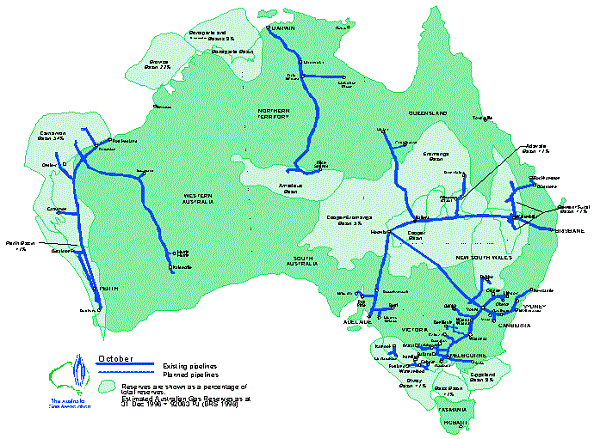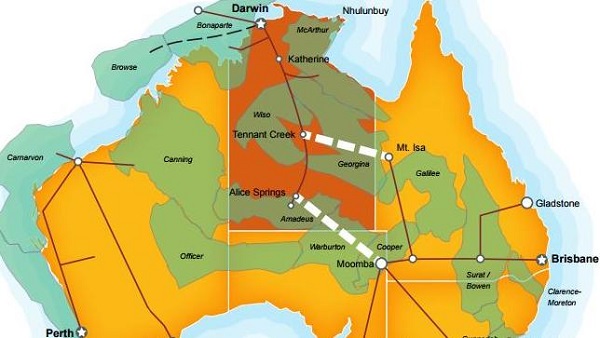Giles Parkinson says of the 2017 budget that Turnbull lets [his] fig leaf droop and stands naked on climate policy. Matthew Rose says Turnbull’s budget ignores energy crisis and dodges climate. The Conversation article is headed Budget 2017: government goes hard on gas and hydro in bid for energy security, which is I think misleading. It goes for gas and hydro, but not hard.
Before looking at what the budget has to offer, it is appropriate to remind ourselves that at the UN climate talks in Morrocco last year, Australia’s proposed effort was ranked fifth worst in a list representing 90% of the world’s emissions. Moreover, Frydenberg has been backsliding since then, suggesting we may not achieve zero net emissions until 2100.
We should keep in mind too that a recent study found that 1.5℃ warming was likely to be reached some time between 2022 and 2040, with the centre-points of the forecasts at 2017 and 2032, depending on which way the Interdecadal Pacific Oscillation (IPO) in the Pacific Ocean breaks.
In terms of dollars the biggest commitment is the announcement that the Commonwealth would buy the shareholdings in Snowy Hydro Limited of the governments of NSW (58%) and Victoria (29%), to add to the 13% currently owned by the Commonwealth. How much? It doesn’t matter, because under the new rules it is “good debt” and kept off-budget. The sale of electricity will pay the interest on the funds borrowed. Presumably there will be limitations on what NSW and Victoria can spend the proceeds.
Yesterday the AFR calculated that the Turnbull government may have to pay about $6 billion, but it has the prospect of cashing in on the hedging market, because of the security of supply provided by hydro, as more baseload fossil generation is turned off.
No-one is sure what is behind the strategy, but it will confuse potential investors in the electricity generation market.
- $28.7 million to develop an East Coast Gas Development Program, designed to accelerate development of onshore gas fields
- $19.6 million for the COAG Gas Market Reform Group
- $30.4 million for independent, scientific base-line measurements in areas earmarked for gas production
- $5.2 million for a cost-benefit analysis of piping gas from the Northern Territory and Western Australia.
The ‘scientific base-line measurements’ appear to be intended to assure landholders and state politicians that it is safe to extract coal seam gas in NSW and Victoria. However, the budget:
- is very pointed in its inference that states and territories with moratoria in place on gas drilling, exploration or fracking will not have access to funds. (Emphasis added)
On gas pipelines, this image I had on file shows the total Australian network:

I doubt that a line from the west coast would be feasible. This map, also from my files, shows two possible connections:

The two hubs in the east coast network are Moomba in northern SA and Wallumbilla, near Roma in Queensland. Annastacia Palaszczuk wanted a pipeline basically straight up the middle of the eastern states, to avoid the long haul through Moomba, but Turnbull and ScoMo seem to have been completely deaf to anything the Queensland government wanted.
Other than gas, Matthew Rose’s piece details the remaining Budget commitments to climate change.
The current centrepiece of the Government’s climate policy the Emission Reduction Fund (ERF) received no further funding in the Budget, with only $300m remaining in the fund.
Also:
- Funding for the Australian Renewable Energy Agency (ARENA) remains as agreed to by the Government and the Opposition following the deal they struck after the election. The two final years of ARENA funding are $137m funding in year 2020-21 leaving $110m in 2021-22. The future of ARENA is uncertain past 2021-22.
The Government reaffirmed its $110m loan commitment for the solar thermal project in Port Augusta. I think that was a Xenophon trade-off in exchange for something.
Sophie Vorrath reports that:
- the Climate Change Authority… has been effectively defenestrated by the Coalition government. Once again, its funding does not extend beyond the coming financial year, as the Coalition repeats its desire to close the authority.
Her article goes into some detail about the Clean Energy Finance Corporation, where the staff numbers will grow from 80 people to 101 to manage its “expanding and diversified” investment portfolio.
The Abbott government attempted to kill the CEFC, but the current mob seem proud of it, as well it might. An email from the CEFC said:
- “As the CEFC’s investment portfolio progressively grows (currently $1.5 billion invested and $3 billion committed of the $10 billion appropriated to CEFC), the Board of the CEFC must ensure it has the requisite resources in place to properly manage those investments and associated business risks, on behalf of the Australian taxpayer, in an efficient and effective manner.”
The CEFC’s third year of operation saw a record $837 million committed to new clean energy investments, contributing to projects with a total value of $2.5 billion, achieving a 73 per cent year-on-year increase in the value of new investment commitments.
The funding is “good debt” allocated by the Gillard Government, and the administrative costs are paid for by the investments.
Essentially the Turnbull Government is tinkering with gas supply, with no sense of urgency, awaiting the Finkel Review. Tony Wood, Energy Program Director, Grattan Institute says on energy this budget is small fry ahead of major policy decisions that rest on the forthcoming Finkel Review of the National Electricity Market next month, and the climate change policy review later in the year.
Ross Garnaut in 2011 especially praised the institutional architecture on which the Gillard/Green climate policies were structured. Abbott/Turnbull have destroyed the carbon pricing (tax), retained CEFC and ARENA because they were not allowed to destroy them (from memory we thank Clive Palmer), have retained until 2020 the Renewable Energy Target (RET), have now ignored and essentially sabotaged the Climate Change Authority which was to take the politics out of ongoing climate policy. This government, in spite of its rhetoric, has put politics at the centre of climate policy.
While the Budget essentially marks time, initiatives from the Gillard government are supporting forward momentum in the absence of a policy framework.

